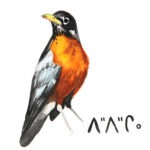RECONCILIATION AND SHARED PROSPERITY
Immersion and Appreciation: The Growth of Western Canada’s Indigenous Tourism Industry
By Marissa Dimmell
Starting on a path forward for Indigenous people in Canada in the process of reconciliation means taking steps towards shared prosperity. The success of Indigenous entrepreneurs, businesses and communities and their progress towards economic reconciliation is exemplified by the emerging industry of Indigenous tourism, which has seen a great deal of success in Western Canadian Indigenous communities.
After years of appropriation and misrepresentation of Indigenous cultures in Canada’s tourism sector, Indigenous people have begun to reclaim their space in the tourism sector. These efforts have led to a growing industry that provides authentic experiences that accurately represent Indigenous cultures.
Indigenous tourism has emerged in recent years as an industry with the power to change perspectives, and preserve culture, language, and community by providing Indigenous groups with “a platform to be the leading voice in reclaiming [their] space in history—both ancient and modern.”
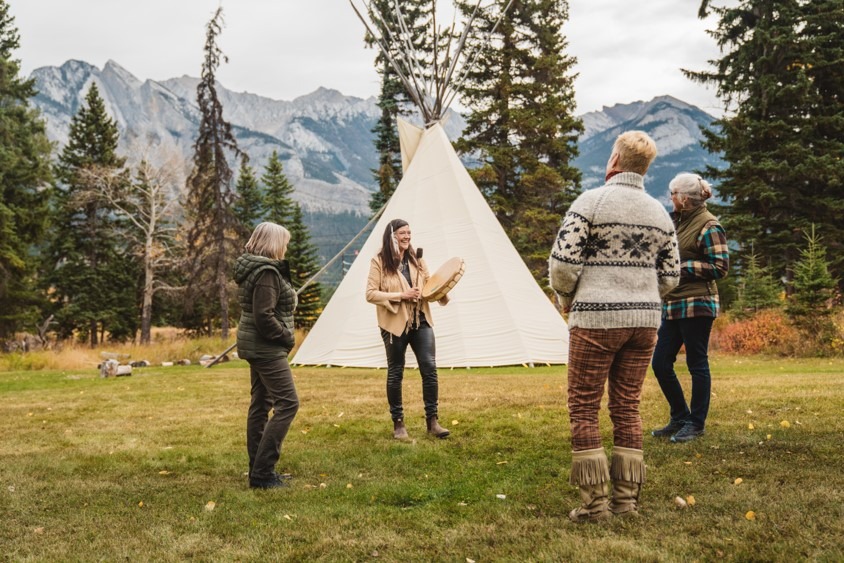
Photo: Indigenous Tourism Alberta
What is Indigenous tourism?
The Indigenous Tourism Association of Canada defines Indigenous Tourism as a “tourism business majority owned, operated and/or controlled by First Nations, Métis or Inuit peoples which demonstrates a connection and responsibility to the local Indigenous community and traditional territory where the operation is based.” The experience offered by this sector should not be confused with tourism businesses neither majority-owned nor operated by Indigenous people that claim to offer “Indigenous tourism experiences.” As stressed by the Indigenous Tourism Association of Canada, “Authentic Indigenous Cultural tourism is by Indigenous peoples, not about Indigenous peoples.”
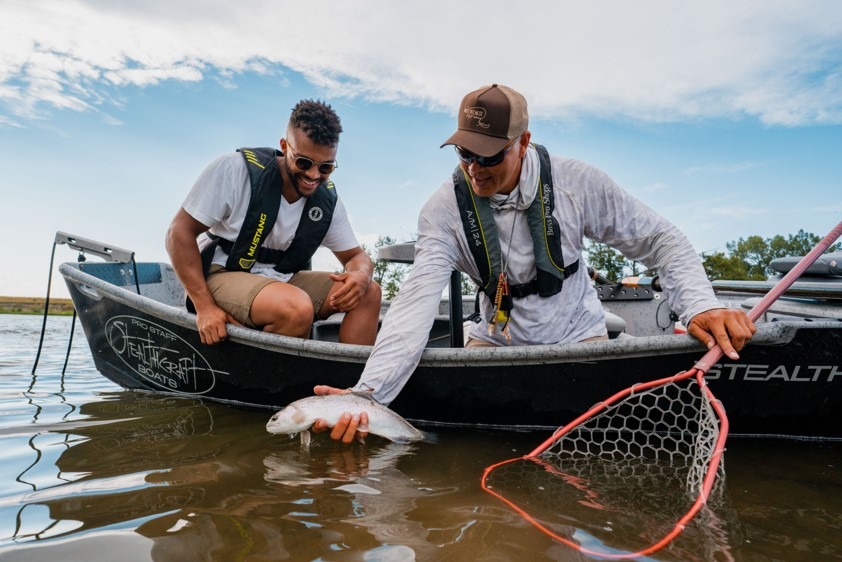
Photo: Indigenous Tourism Alberta
Indigenous Tourism in Western Canada
Across Canada, there are about 1,900 Indigenous tourism businesses, which employ approximately 40,000 workers and generate $1.9 billion of direct GDP contributions to the Canadian economy. In the West, BC is a leader in the sector, employing close to 7,000 people and generating $260.3 million in GDP. Based on findings by the Conference Board of Canada in 2019, Indigenous tourism growth is outpacing Canadian tourism activity overall in terms of both employment and GDP contributions (employment: +18.7% vs +5.1%; GDP: +23.2% vs +12.0%). Barriers to financing and training remain, but Indigenous tourism is—and will continue to be— a key driver of employment and GDP contributions for Indigenous communities. While the ongoing COVID-19 pandemic may have temporarily put a damper on this growth as international travellers are crucial to the sector’s success, Indigenous tourism is poised to grow in coming years.
Spotlight Attractions
The Indigenous tourism sector offers a constellation of cultural experiences. A closer look at businesses and attractions in operation across the West offers a snapshot of the diversity of each attraction.
Haida Enterprise Corp,. Skidegate BC
Haida Enterprise Corp., owned by the Haida Nation offers guests an experience in cultural ecotourism unique to the rugged archipelago of Haida Gwaii just off the northwest coast of BC. From nature-watching experiences of whales, black bears and eagles, to the Ocean House – a floating cultural and natural experiential lodge – the Haida Nation welcomes visitors to immerse in an authentic introduction to their culture. [1]
Kispiox Band Council, Kispiox BC
In this 3,000-year-old Gitxsan village in west-central BC, Kispiox totem poles still stand. Raft trip with local guides, camp in the wilderness or stay at a luxury lodge. From fly fishing to learning how to smoke and process smoked salmon, the Kispiox Nation offers an authentic experience for visitors in BC’s wilderness. [2]
Grey Eagle Resort and Casino, Calgary AB
Located only minutes outside of downtown Calgary, AB and on the doorstep of the Rocky Mountains, the Grey Eagle Resort and Casino, owned by the Tsuut’ina Nation, has established itself as a high-caliber, 4-star resort. Grey Eagle offers first-class services and amenities, including meeting and convention space. They even offered drive-in movies in the parking lot during Covid.
Métis Crossing, AB
Located northeast of Edmonton, AB, Métis Crossing is home to Alberta’s first Métis cultural interpretive centre. From the Victoria Trail Voyageur Experience, to costumed interpreters and lessons in beaver trapping and Métis sash weaving, to tours of the former fur trade fort of the Victoria Settlement, the Métis Crossing offers an immersive experience that authentically represents the culture unique to Alberta’s Métis .
Logo by artist Lana Whiskeyjack
Pei Pei Chei Ow Catering Company, Edmonton AB
Pei Pei Chei Ow (pronounced “pe-pe-s-chew”) is a catering company based in Edmonton, AB that offers an authentic Indigenous culinary experience. Through their specialty dinners, educational events and food experiences – using both Western and traditional ingredients, Pei Pei Chei Ow examines the impact of colonialism on Indigenous food system and contemporary culture. In addition to elaborate and customized menus, a general catering menu is available year-round.
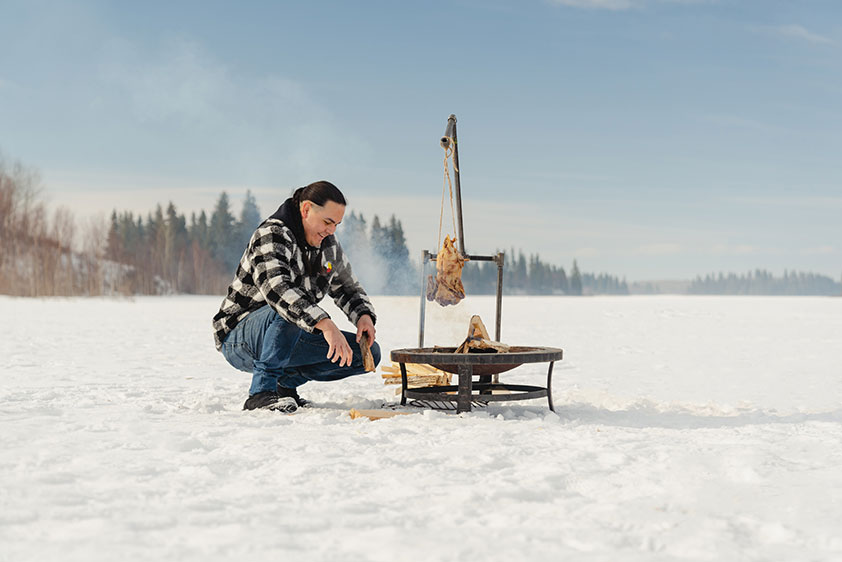
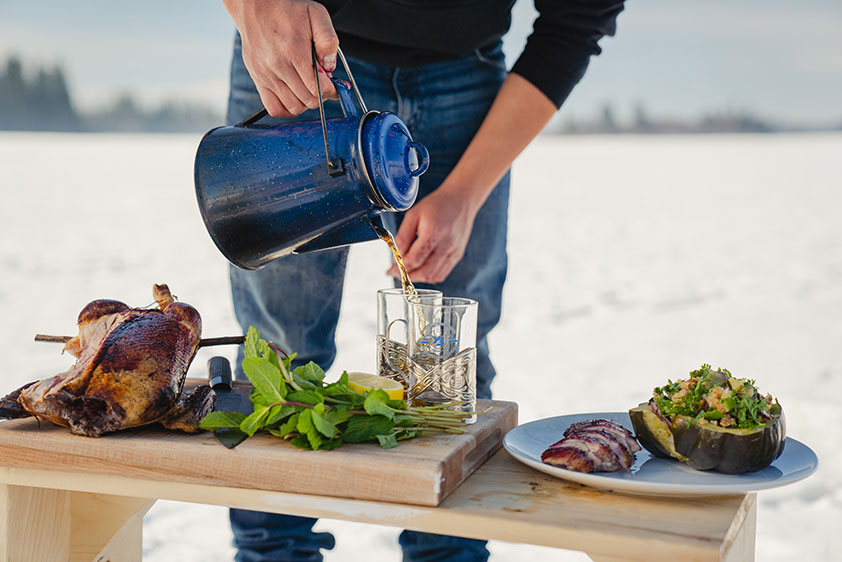
Photos: Roam Creative
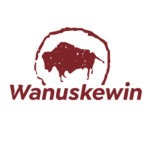
Wanuskewin Heritage Park, Saskatoon SK
As one of the most notable Indigenous tourism sites in Saskatchewan, Wanuskewin Heritage Park, located just outside of Saskatoon, SK, showcases the unique and diverse cultures of the nomadic nations of the Northern Plains. As an active archeological site—the longest-running one in Canada – the park is located on land that is spiritually and culturally significant to the groups that gathered there as long as 6,000 years ago.
Some archaeological dig sites date back thousands of years making them older than the Egyptian pyramids; these sites provide clues to the daily existence of the early peoples. Tipi rings, stones cairns, pottery fragments, plant seeds, projectile points, egg shell fragments and animal bones all give evidence of active thriving societies. While some sites teach us about life thousands of years ago other sites like the ancient Medicine Wheel still remain shrouded in mystery.
The park underwent a $40-million renewal in 2019 and was recently named to the UNESCO World Heritage Tentative list, the first in Saskatchewan’s history. In 2019, Wanuskewin was named “Top Indigenous Tourism Destination in Canada by the Tourism Industry Association of Canada.
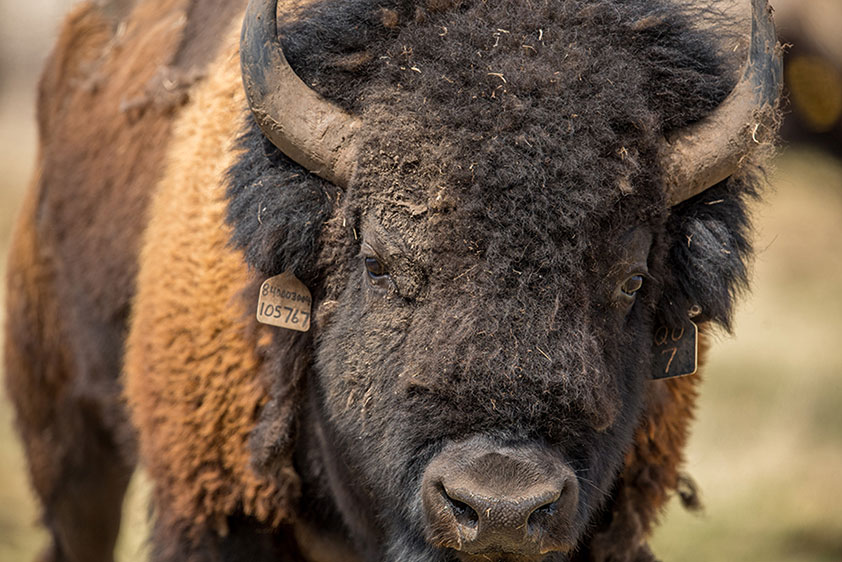
Photo: Bison bull, Wanuskewin herd at Wanuskewin.
Wapusk Adventures, Churchill, MB
Wapusk Adventures is co-owned and operated by Dave Daley, an accomplished Métis musher, who offers an authentic northern dog sled experience—one built on a framework of Indigenous ancestry. In the winter the company offers dogsled tours and, in the summer—dog carting tours.
Whiteshell Indigenous Land and Water Knowledge, Whiteshell Provincial Park MB
Led by Anishinaabe member Diane Maytwayashing, Whiteshell Indigenous Land and Water Knowledge offers in-depth workshops that examine the history of the Whiteshell Provincial Park area from an authentic Indigenous perspective—including tours of the historic Bannock Point Petroforms.

Photo: Diane Maytwayashing with her daughter at the Whiteshell Petroform site in central Manitoba where she conducts guided tours of the area.
The Powwow Trail, Western Canada
The Powwow Trail, a series of powwows across the Western provinces, offer a colourful and authentic experience for visitors, highlighting Indigenous traditional celebrations – with a mixture of Western traditions like rodeos.
Read more:
CWF turns 50
Our West: People, Places and Progress from 1971 to 2021
Sources:
[1] Indigenous Tourism Association of Canada, “Guide to Indigenous Tourism.”
[2] Indigenous Tourism Association of Canada, “Guide to Indigenous Tourism.”
[3] Indigenous Tourism Association of Canada, “Guide to Indigenous Tourism.”

